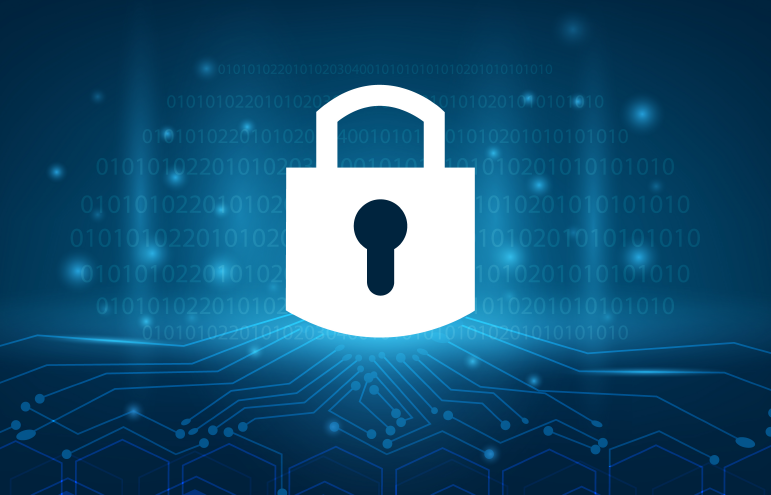How to Always Be Prepared for a Cyberattack

Cybersecurity attacks have been ramping up nationwide, and the FBI expects the trend to continue. Americans reported 847,376 complaints in 2021, a 7-percent increase from 2020, according to the FBI’s Internet Crime Complaint Center’s 2021 Internet Crime Report. Many of the complaints filed in 2021 involved ransomware, phishing, data breach, and business email compromise. Financial services is one of the critical infrastructure sectors that are most frequently targeted by ransomware attacks.
However, here are five best practices that if effectively implemented, managed, and monitored can ensure that your financial institution is always prepared for a cyberattack:
1. Authentication
Passwords have become more complicated to create, remember, and maintain. Twenty years ago, passwords consisted of a simple string of characters. Now they are more complex, requiring a combination of numbers, symbols, and upper- and lower-case letters. Increasingly, user management tools allow institutions to take advantage of robust authentication options like multifactor authentication (MFA). MFA adds extra elements and more security to the sign-on process, which is why users should employ it whenever possible to log in to any network or system at your institution. This is especially important for higher-risk situations that involve network administrator accounts, virtual private network access, and critical management applications.
MFA is one of the most important cybersecurity practices to reduce the risk of intrusions. Users who enable MFA are up to 99 percent less likely to have an account compromised, according to a joint advisory issued by the FBI and Cybersecurity and Infrastructure Security Agency. “Every organization should enforce MFA for all employees and customers, and every user should sign up for MFA when available,” the advisory states.
2. Patch Management
Patching can be a constant and tedious process as it requires keeping up with updates from numerous sources and applications. This can entail patching a plethora of Microsoft products, along with banking and lending applications, PDF readers, virtualization applications, database applications, ATM software, and more. Not patching a security hole in any of these could lead to a massive security breach with catastrophic implications for institutions. It’s imperative to maintain a list of all approved applications and monitoring software on the network as well as have an update policy and a clearly defined process for each application. Major breaches have happened because a single patch was missing on a single device. Patch management cannot be ignored or treated as an afterthought.
3. Email Security and End User Best Practices
Understanding email, specifically phishing techniques, is one of the most critical aspects of being prepared for a cyberattack. While financial institutions are frequently targeted by phishing attacks, following these best practices can help to prevent business email compromise:
- Augment your email solution with effective scanning software. This can help identify SPAM and phishing emails before they reach employees.
- Train employees to recognize phony phishing emails, so they can “think before they click.” These bogus emails can be difficult to spot unless you know what you are looking for; e.g., poor grammar and spelling, links that don’t match the domain, unsolicited attachments, etc.
- Test employees to see how well they respond to a realistic phishing attempt. Invest in a program that lets you send fake phishing messages and track which employees fail the test, so you can offer additional training to those who need it.
4. Backups
Backups play a crucial role in file recovery, disaster recovery, and ransomware attacks. To successfully bounce back from a cyberattack, institutions need to have all backup scenarios sufficiently covered, including file-level backups, disaster recovery backups, Veeam backups (for virtual servers), and SQL/database backups. While most institutions use a combination of different backup solutions, the key objective is to back up files offline or in the cloud, so they are not connected to your network. Then if a ransomware attack strikes the network, your offline and cloud backups will not be affected.
5. Vendor Risk Management
Vendor management can have a dramatic impact on the overall success of your information security plan. If you outsource to a vendor with inadequate security protocols, their weakness essentially becomes your weakness. The first step in vendor risk management is to perform a risk assessment to evaluate your level of inherent risk. This must always be done first so that you can then identify and implement the proper controls. If the controls selected do not completely offset the risks identified, then alternate or compensating controls would need to be identified to achieve a level of residual risk that is within your risk appetite.
There’s no silver bullet when it comes to resisting a cyberattack but focusing on the five areas above can significantly increase your institution’s cyber resiliency. Safe Systems offers a range of technology, compliance, and security solutions that are exclusively designed for community banks and credit unions. Contact us to learn how we can help you implement these five and other best practices.

